Upload your RNAseq data
Navigate to the Latch Data tab on the left panel.
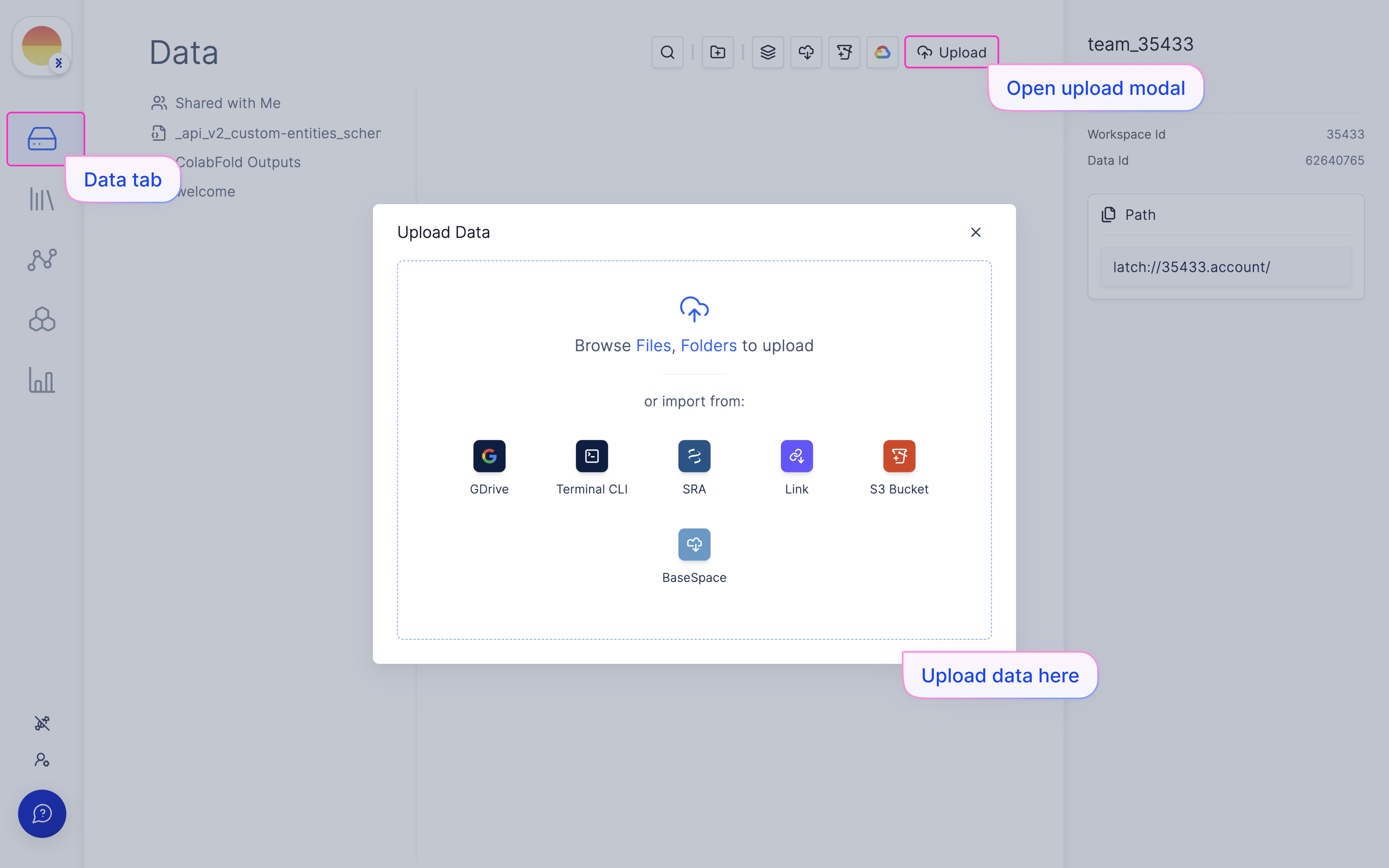
Set up samplesheet on Latch Registry
Navigate to the Latch Registry tab on the left panel.
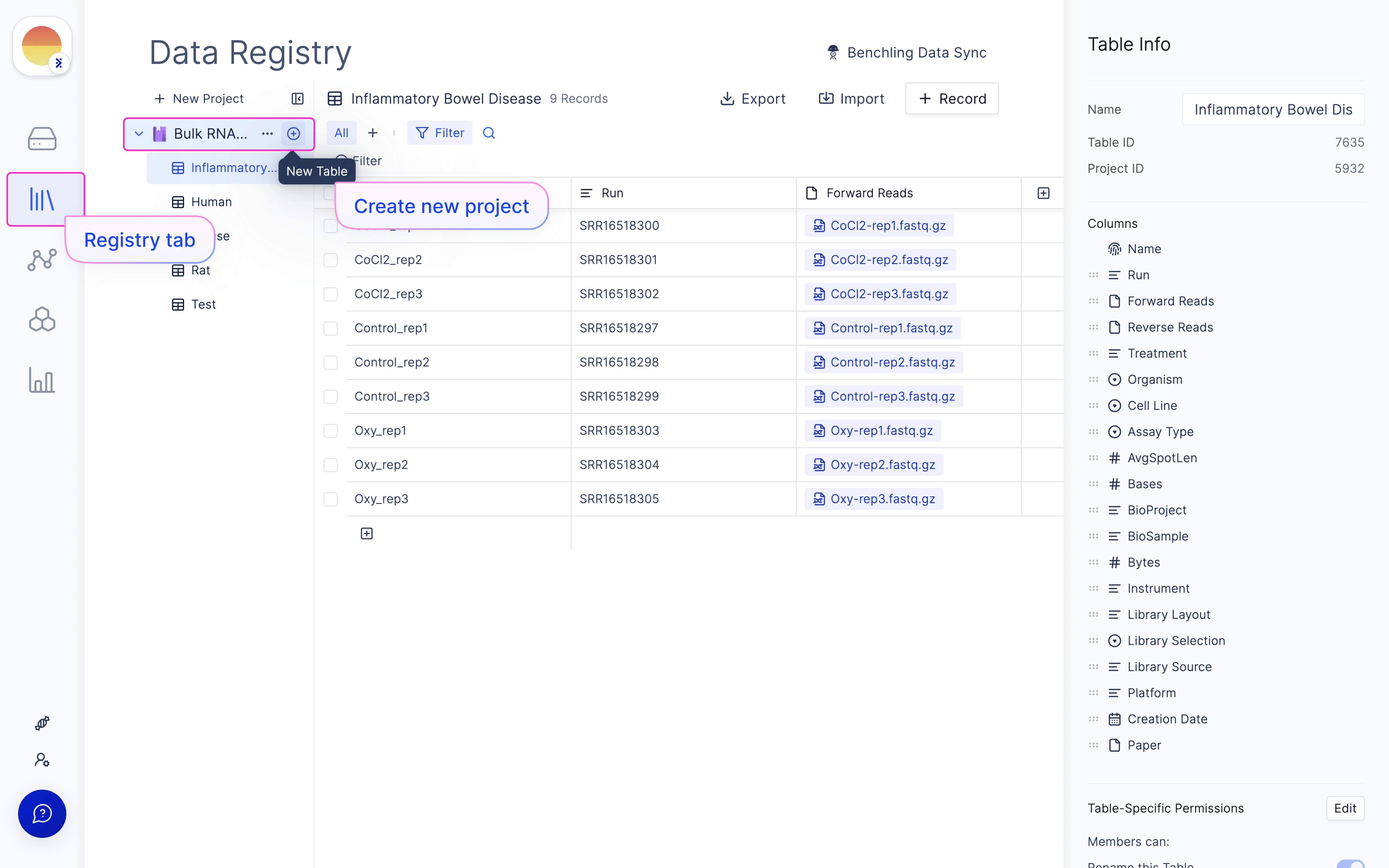
Select the ‘Import -> Bulk Import Sequencing Data’ modal on the top right of the screen.
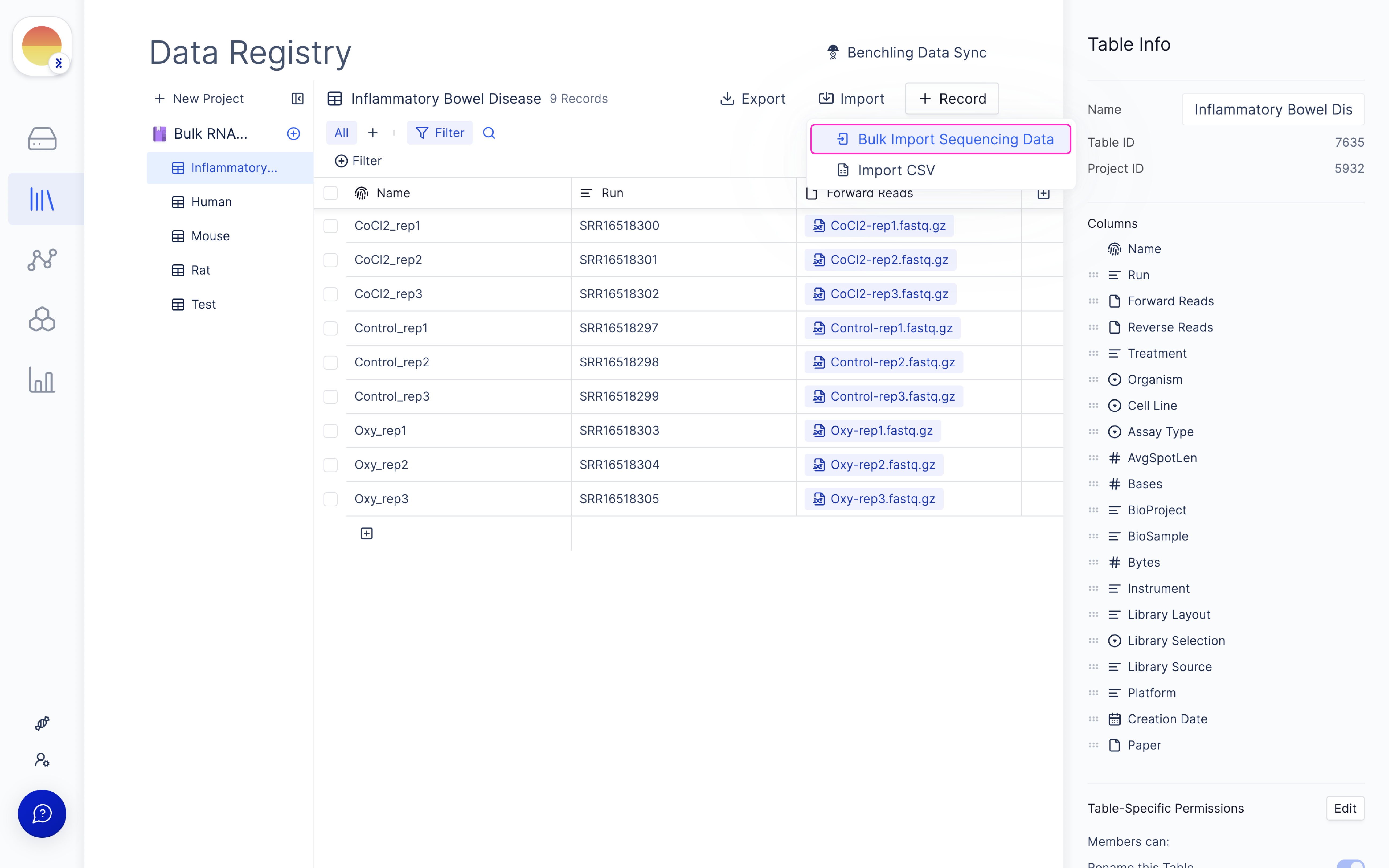
Choose the folder containing your raw RNAseq data and click ‘Select’.
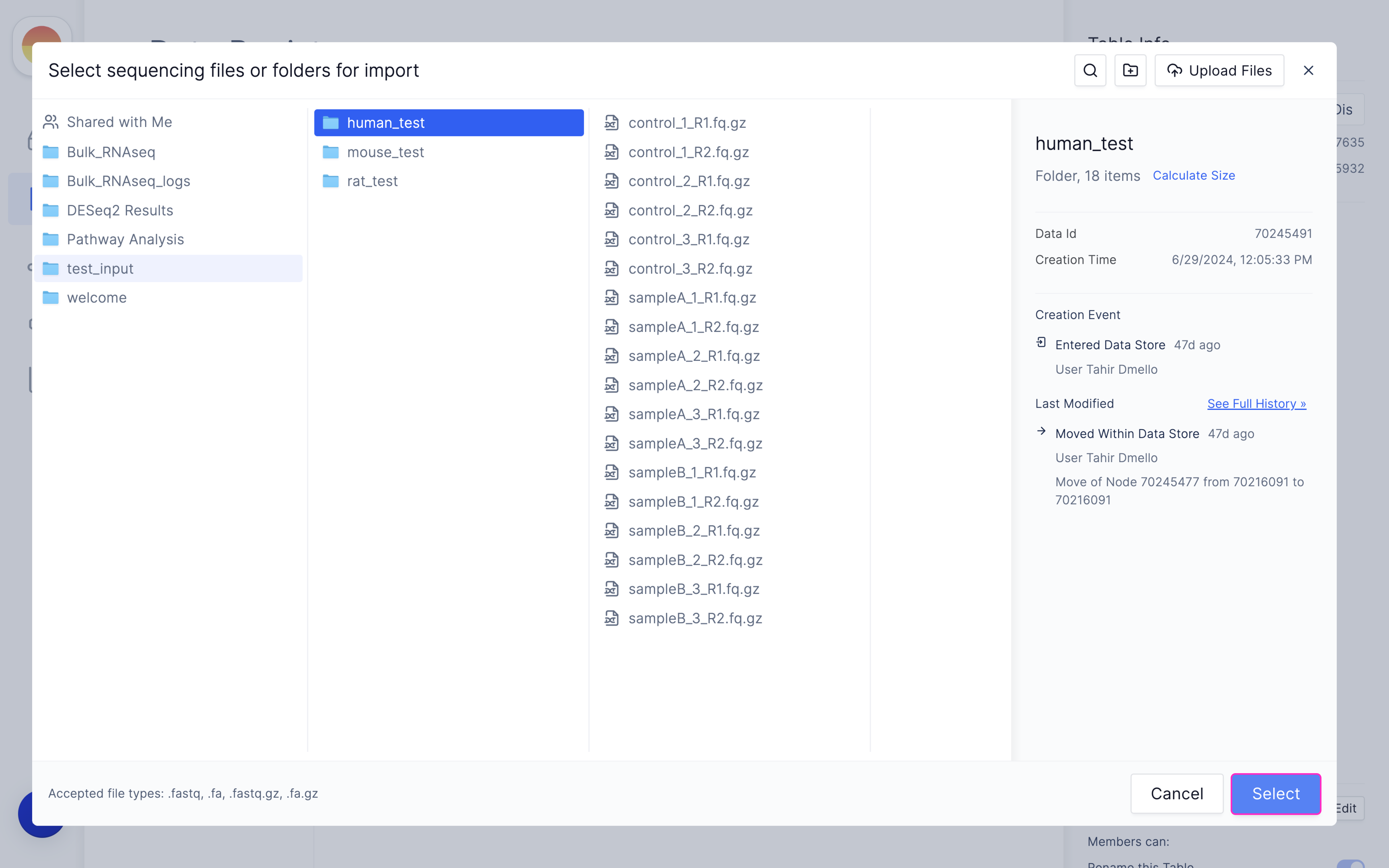
Confirm or modify name parsing method used to auto-group your samples and click ‘Next’.
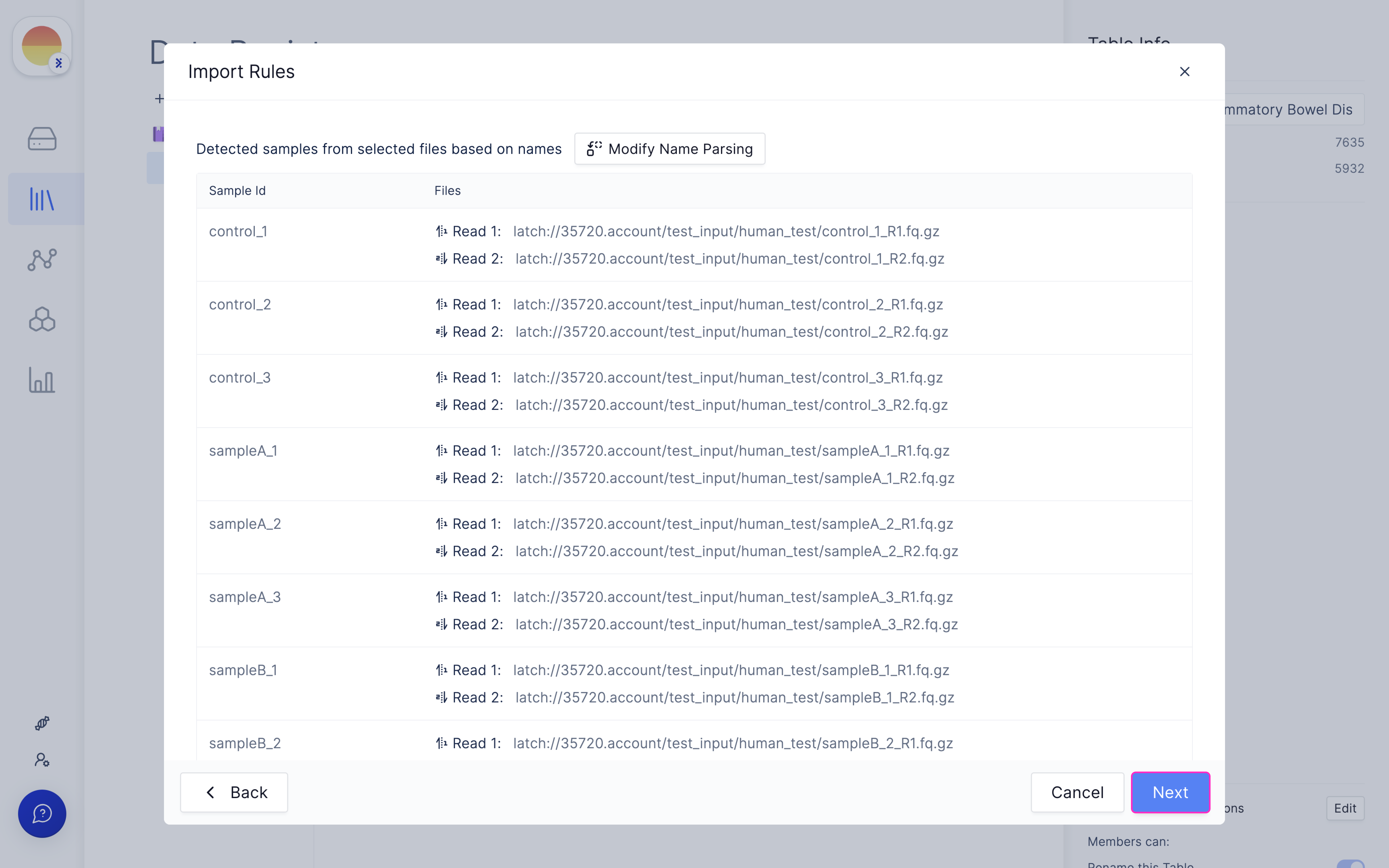
Fill in ‘fastq_1’ and ‘fastq_2’ for your forward and reverse read file respectively and click ‘Import’.
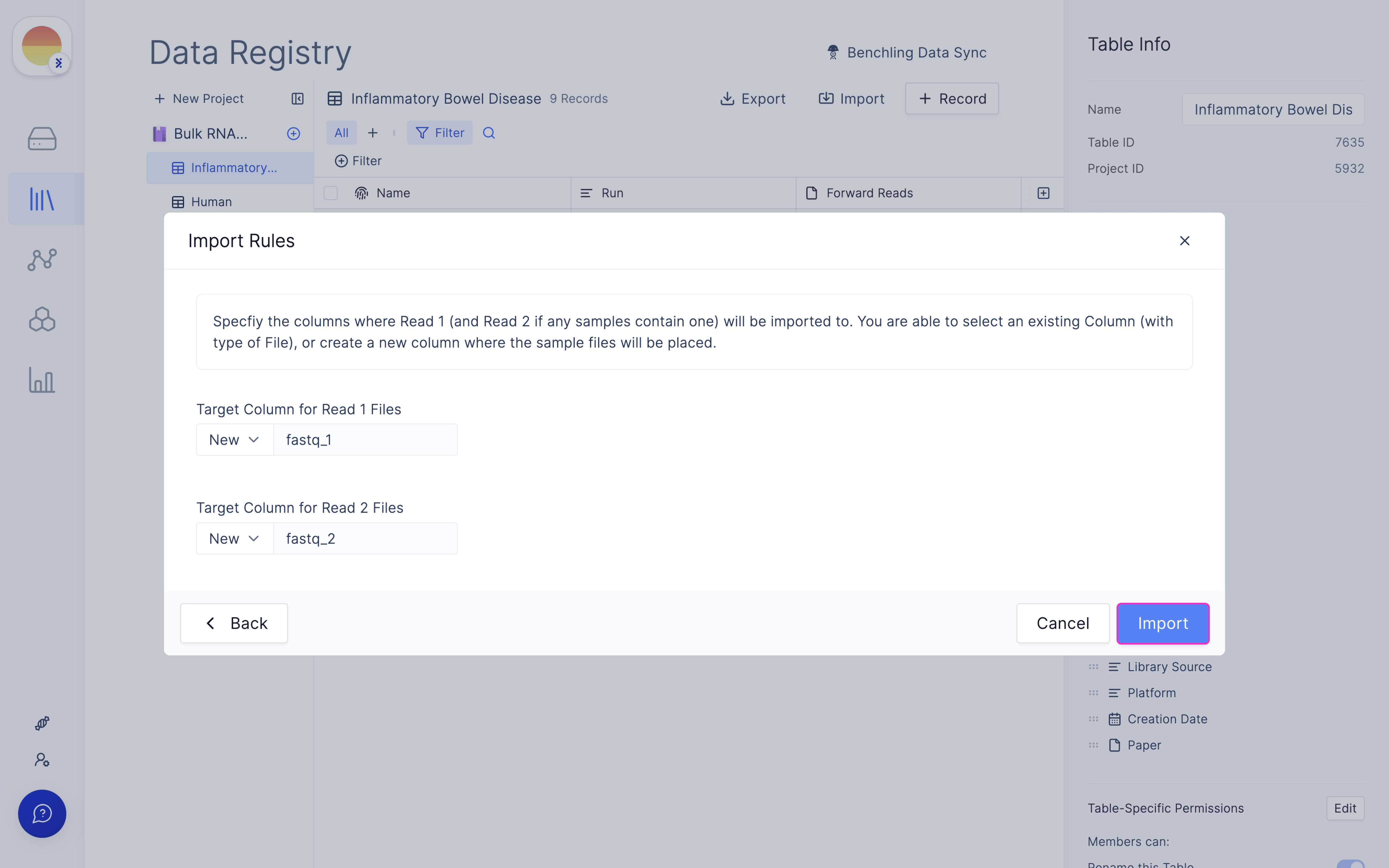
This will generate a samplesheet on Latch Registry for your data.

Launch ‘nf-core/rnaseq’ Latch Workflow
Navigate to the Latch Workflows tab on the left panel.
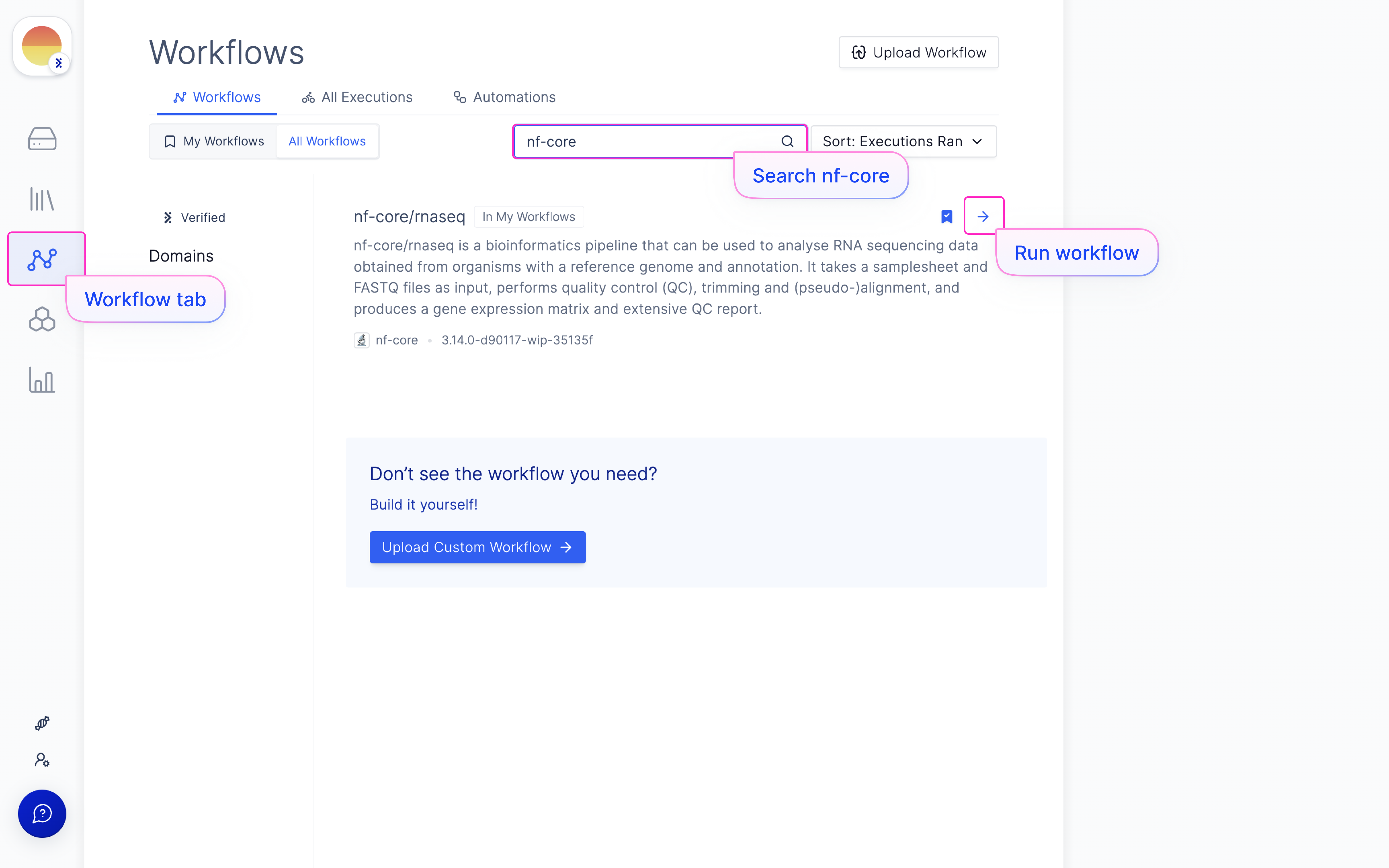
Import samplesheet with ‘Import Rows from Registry’.
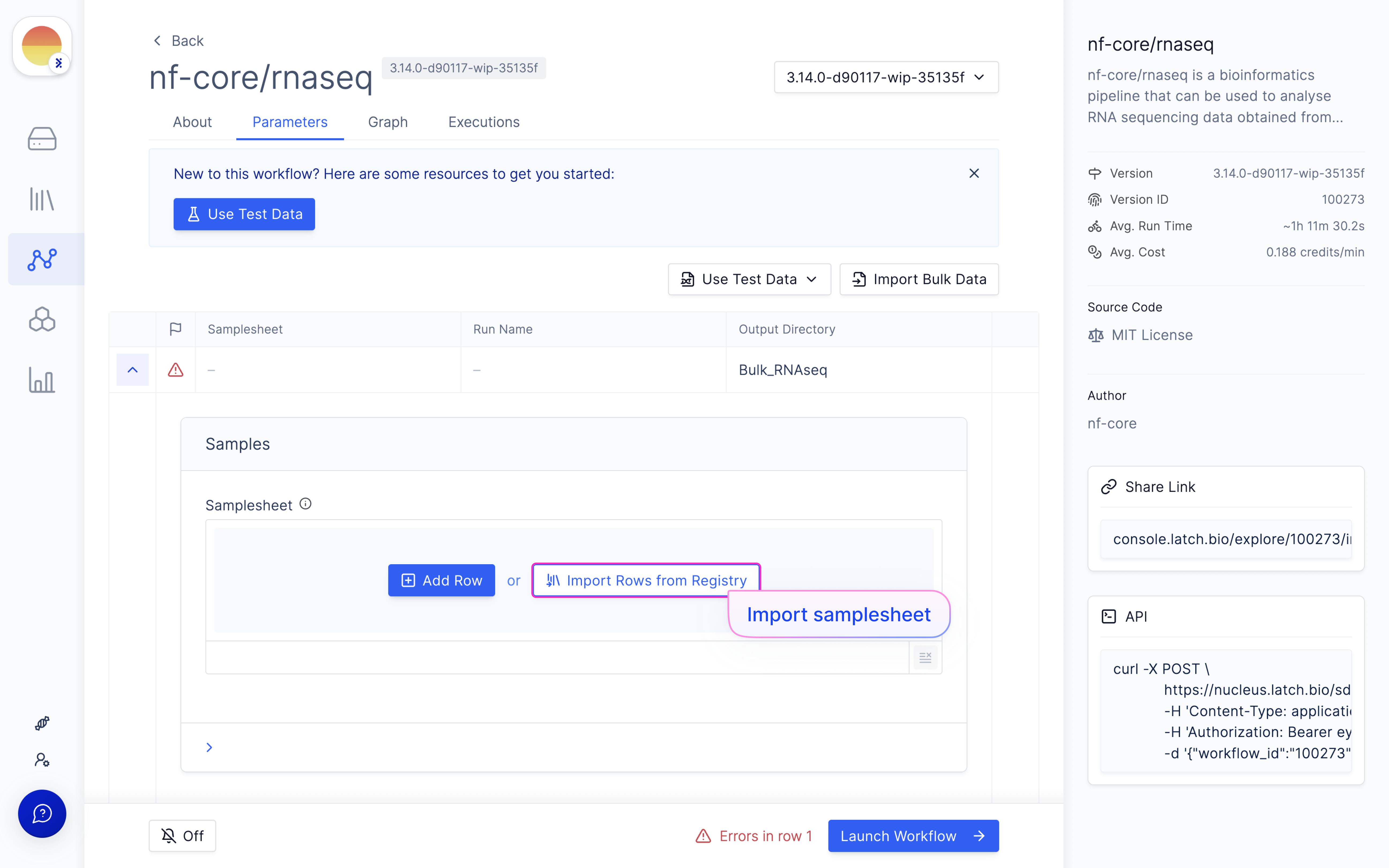
Choose needed samplesheet, followed by needed samples (select all on top left if needed.
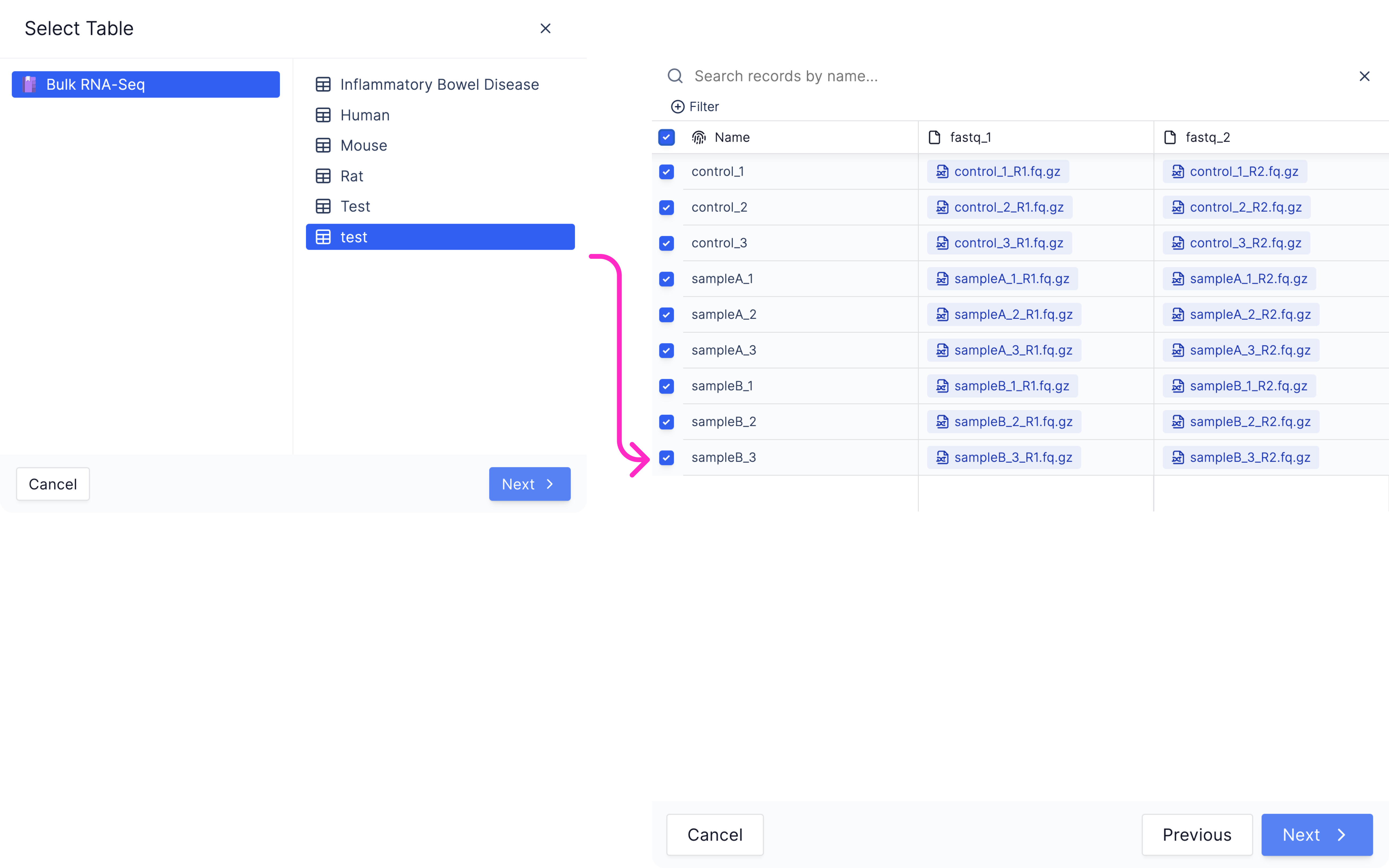
Map samplesheet columns to workflow parameters and click ‘Import’.
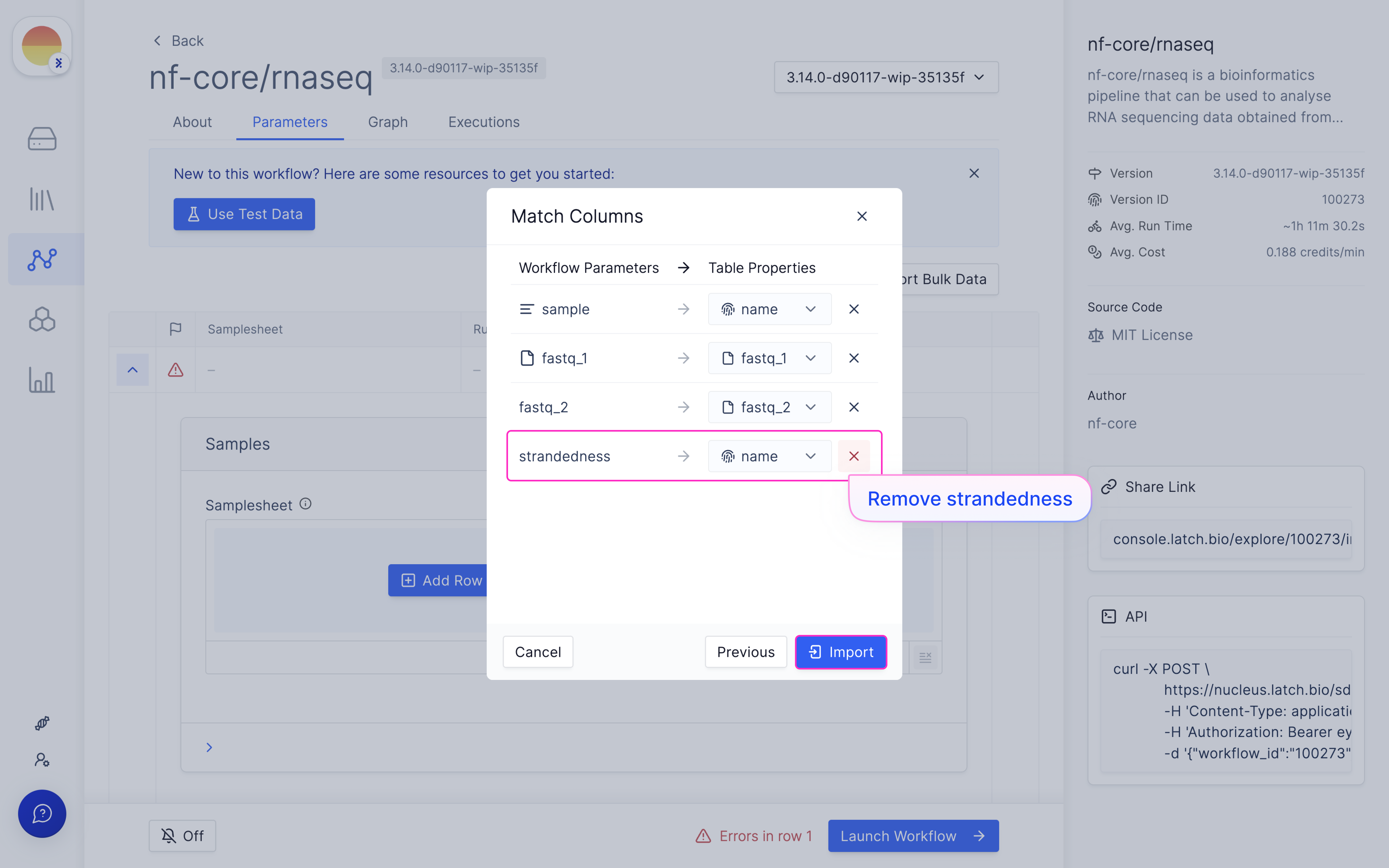
Choose ‘Reference Genome’ from ‘Latch Verified Reference Genome’ tab.
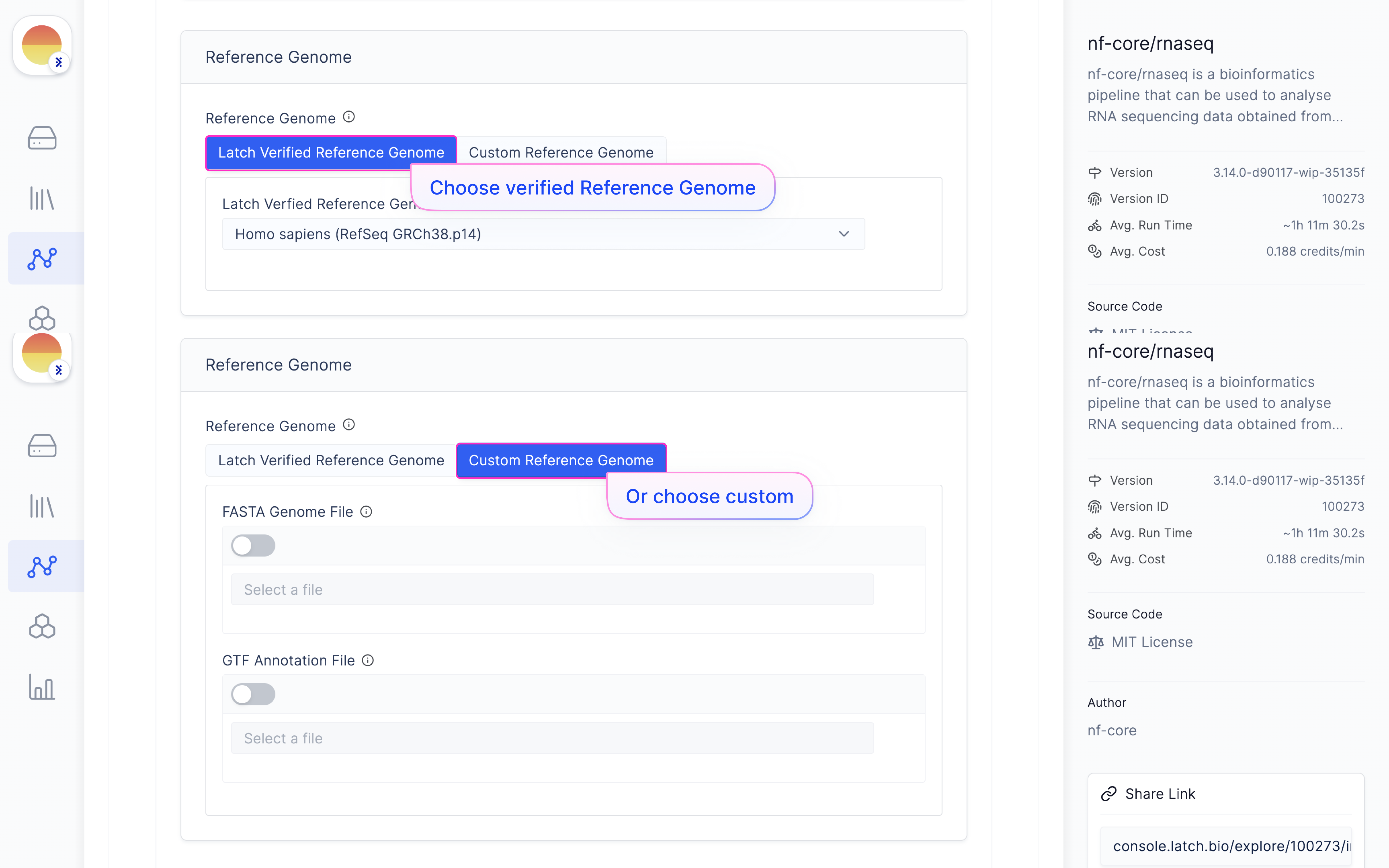
[Optional - Advanced] Choose alignment method or pseudoalignment method.
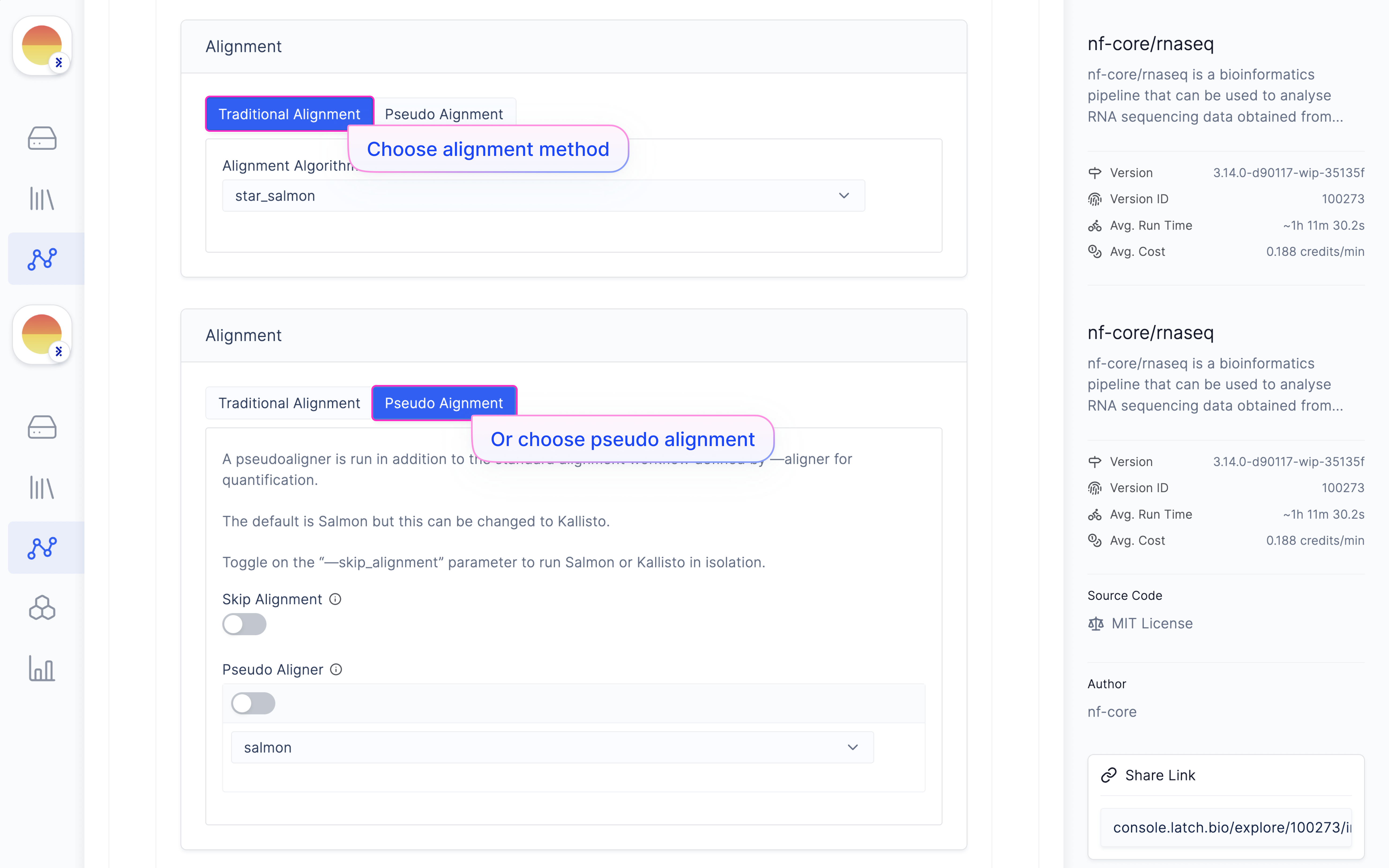
[Fill in a ‘Run Name’ and hit ‘Launch Execution’.
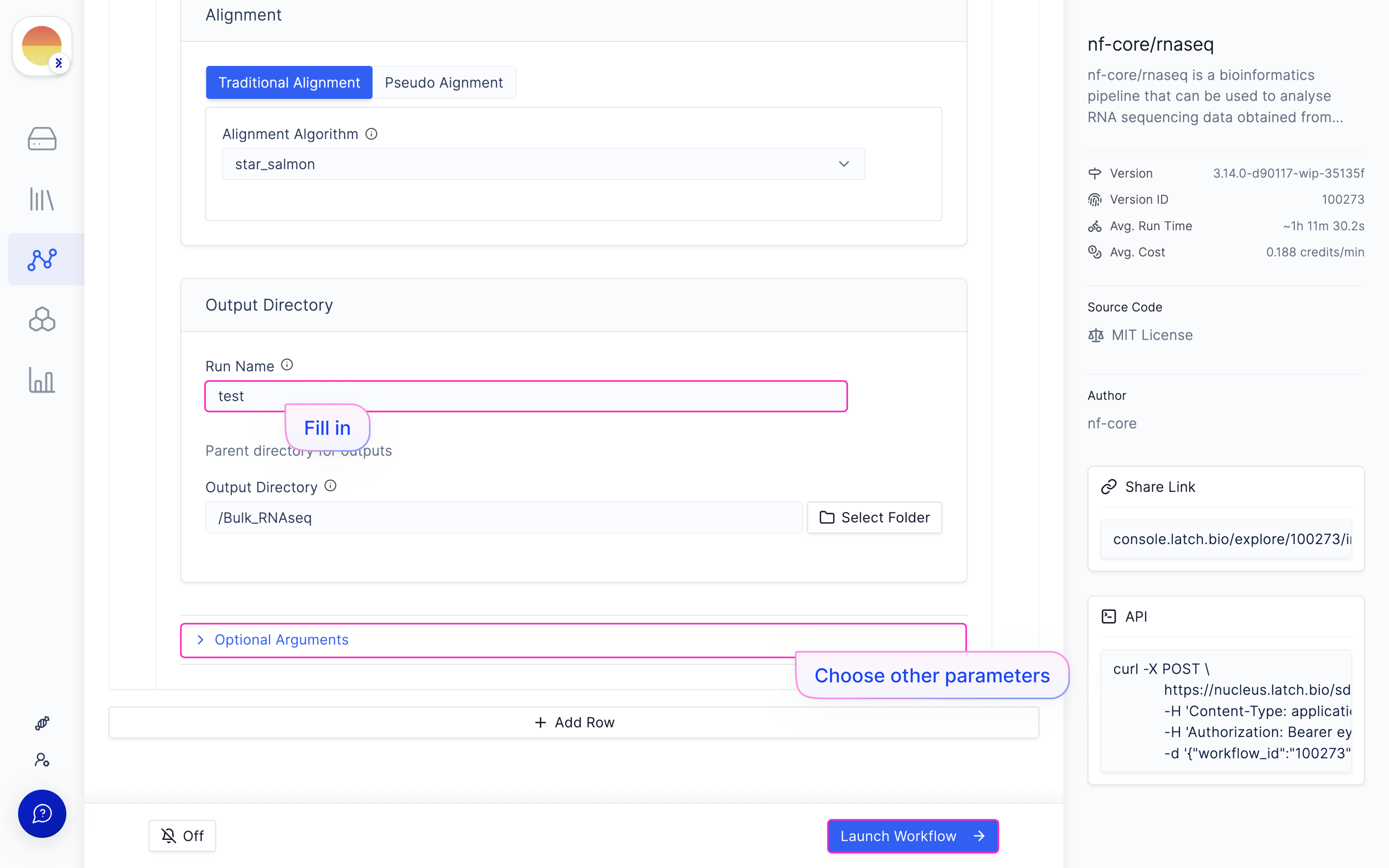
[Optional] Monitor the execution under ‘All Executions’.
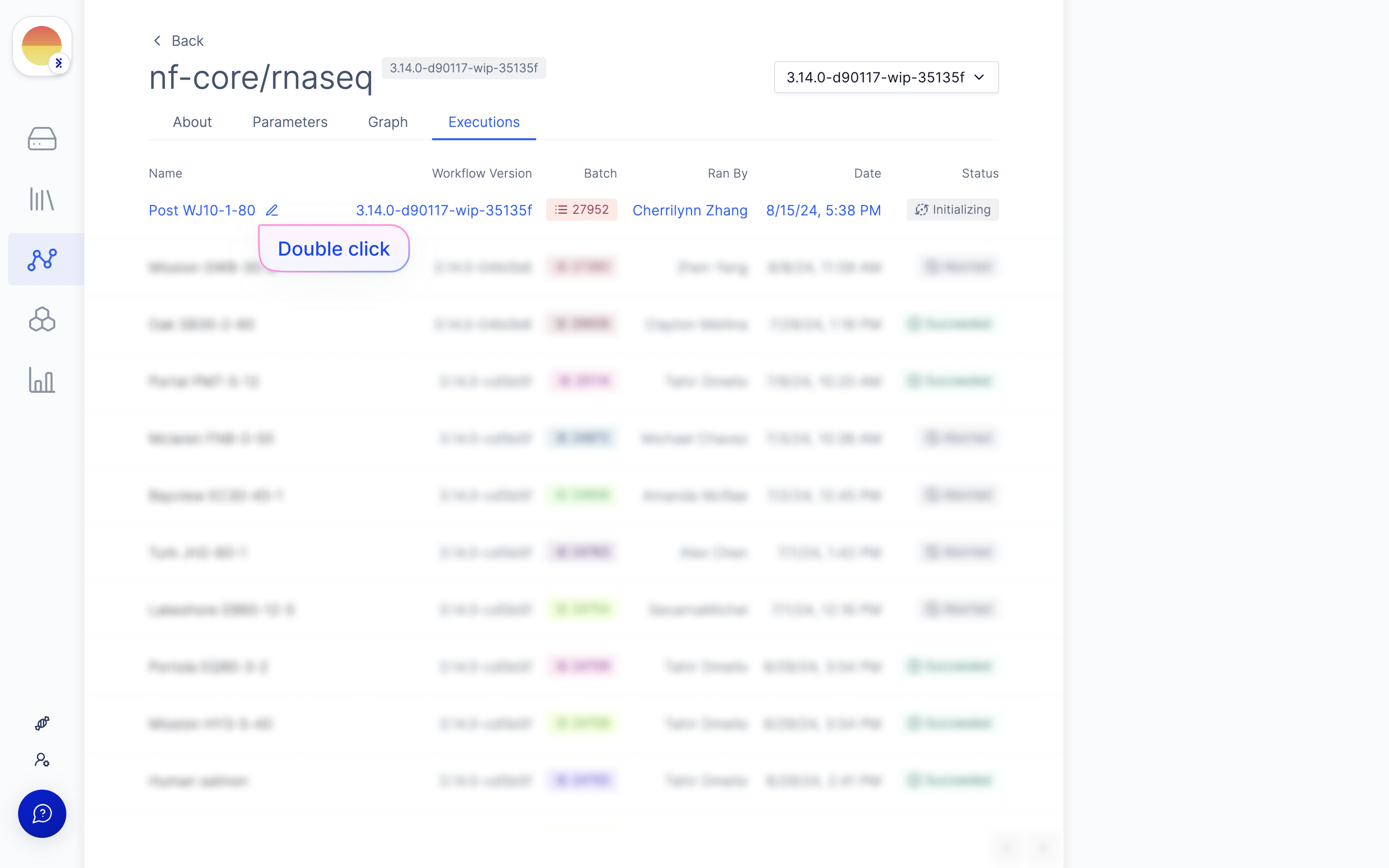
Once complete, the output will be found in the output directory under your provided run name.

Differential Gene Expression
Launch ‘DESeq2 (Differential Expression)’ Latch Workflow
Navigate to the Latch Workflows tab on the left panel.
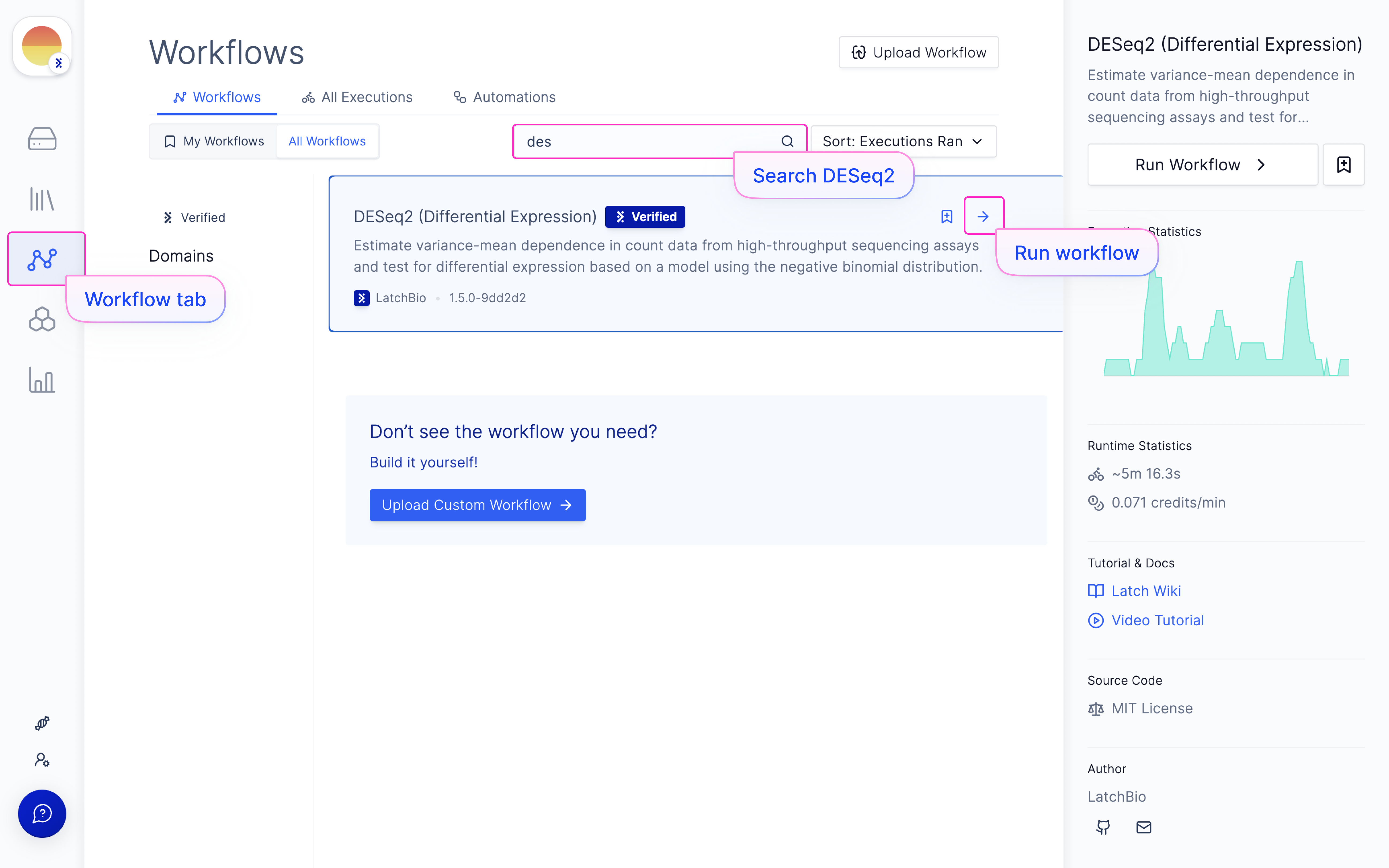
Choose your input counts file from the outputs of ‘nf-core/rnaseq’.
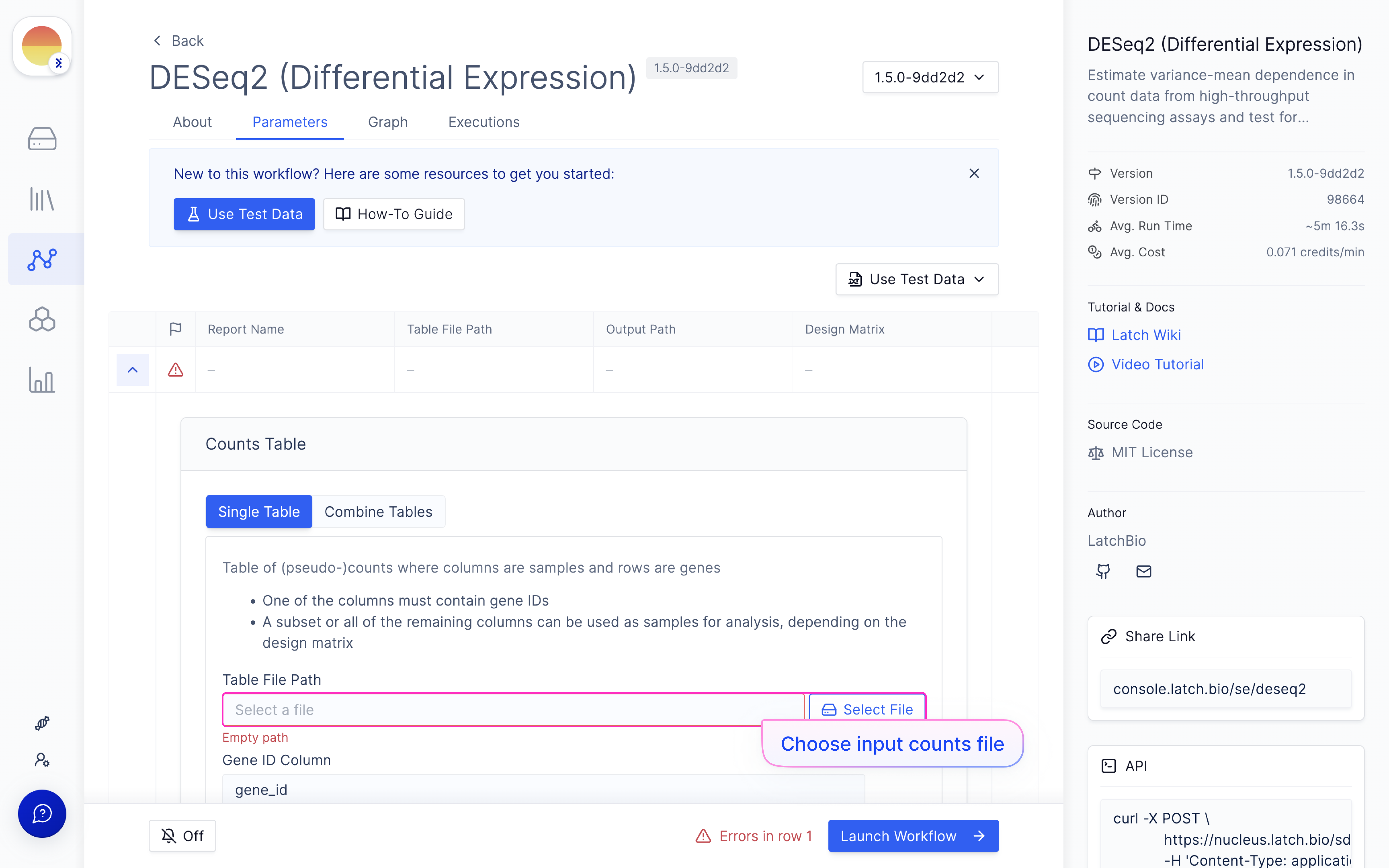
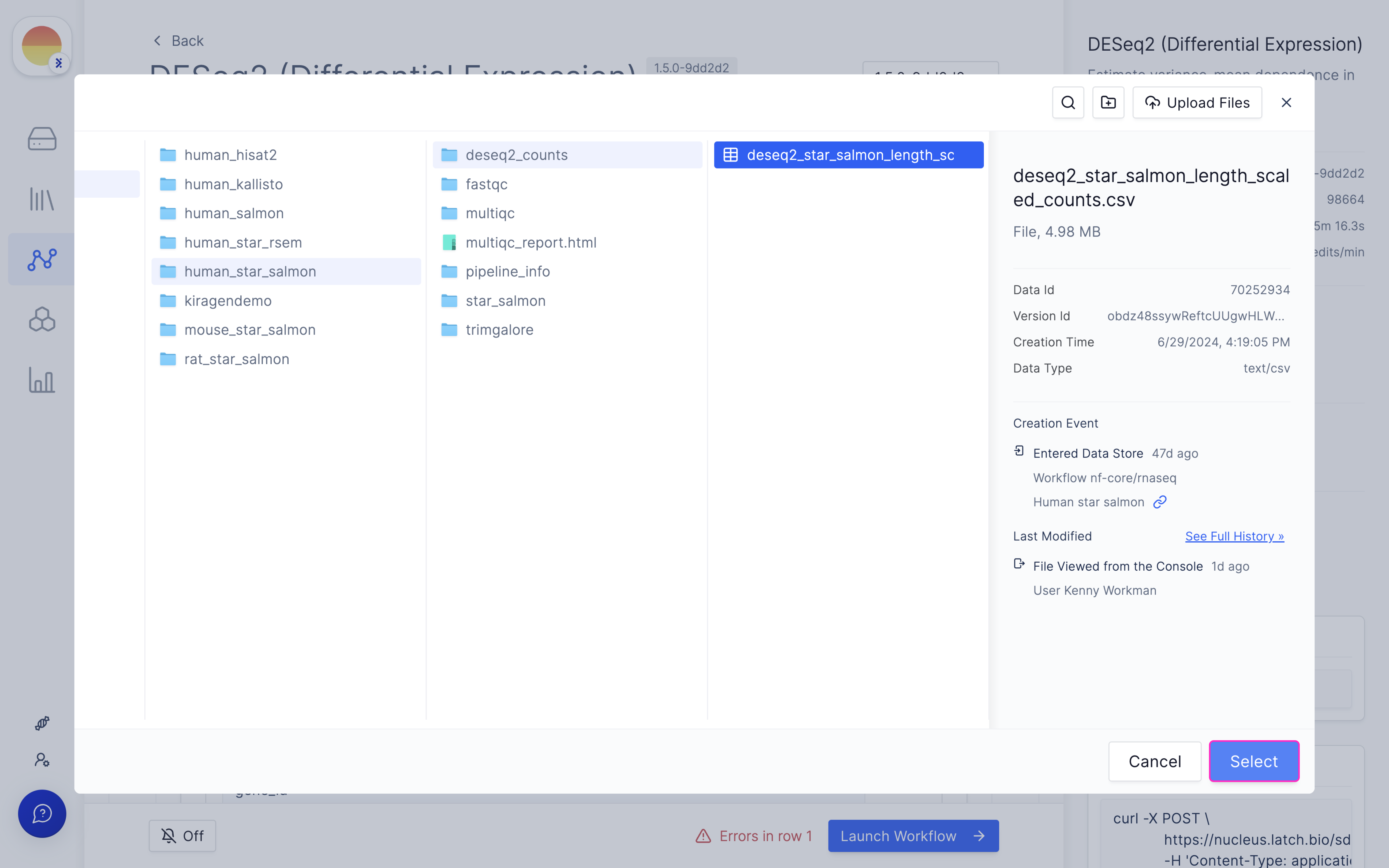
Choose your conditions for your samples in the ‘Manual Input’ design matrix tab.
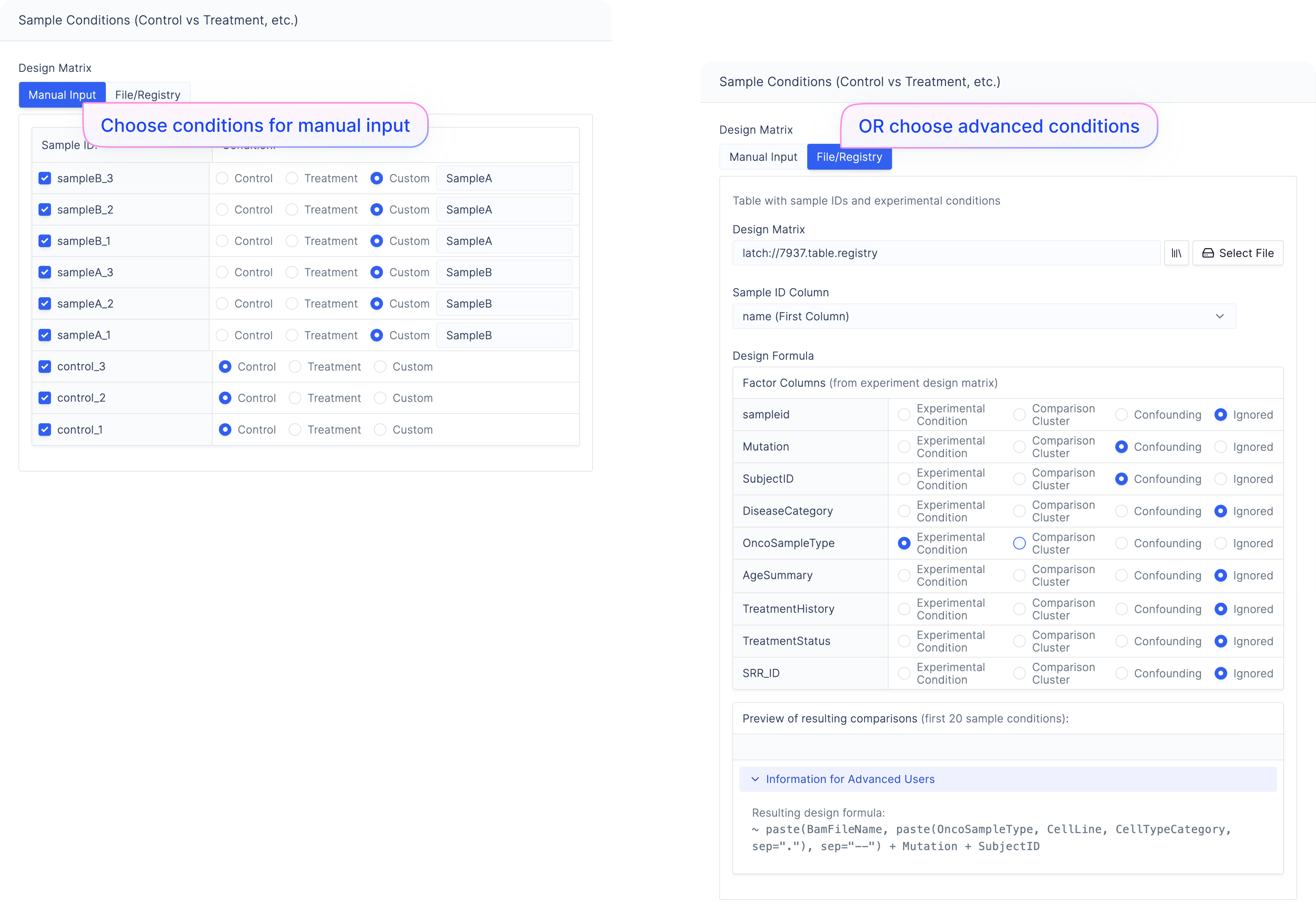
Choose ‘Report Name’ and hit ‘Launch Workflow’.

Visualize differential gene expression outputs in Latch Plots
Navigate to the Latch Plots tab on the left panel.
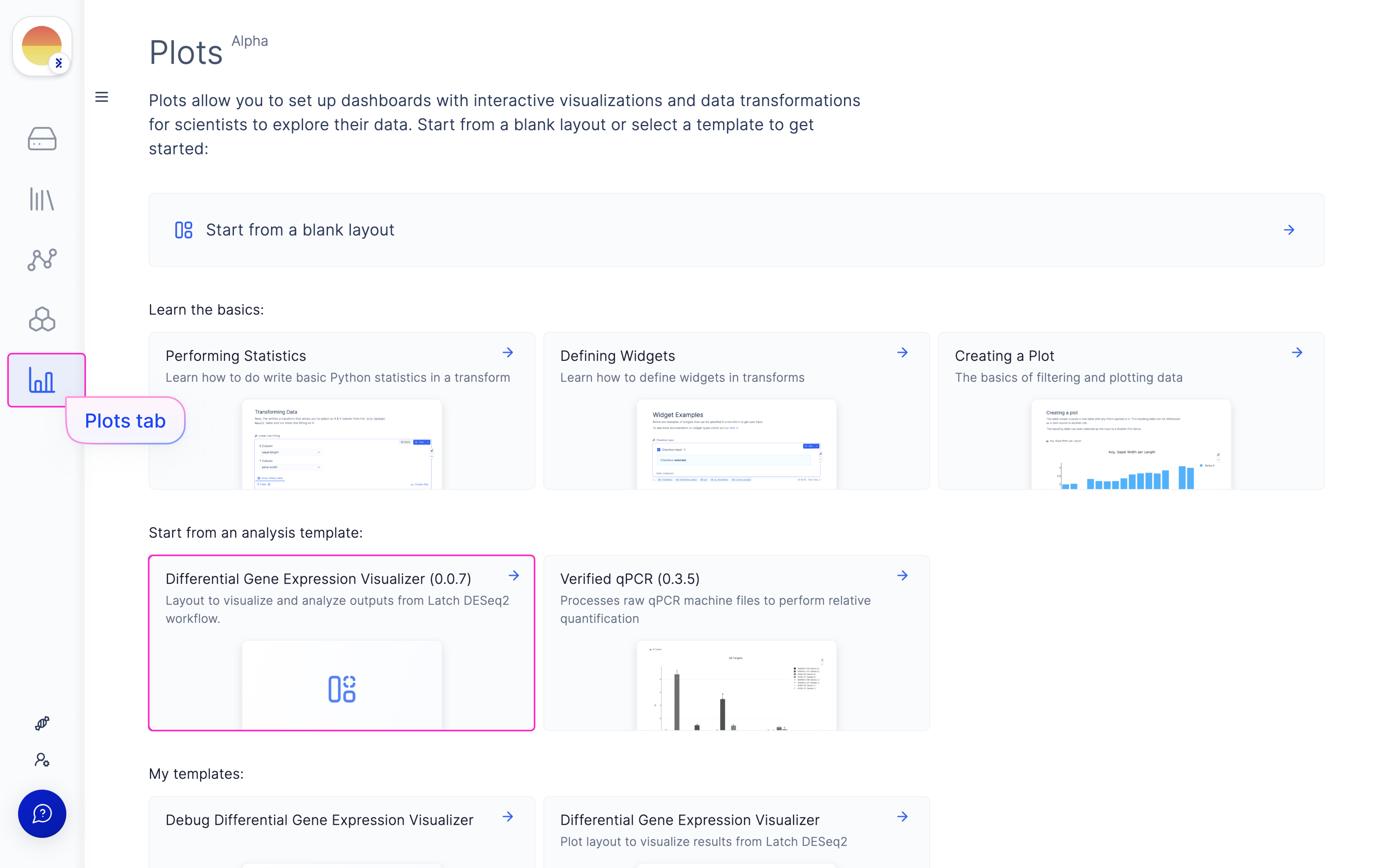
Once the DESeq2 run is done, choose your outputted run (or select from Latch Data if a custom output location was used) and scroll through for QC graphs and heatmaps.
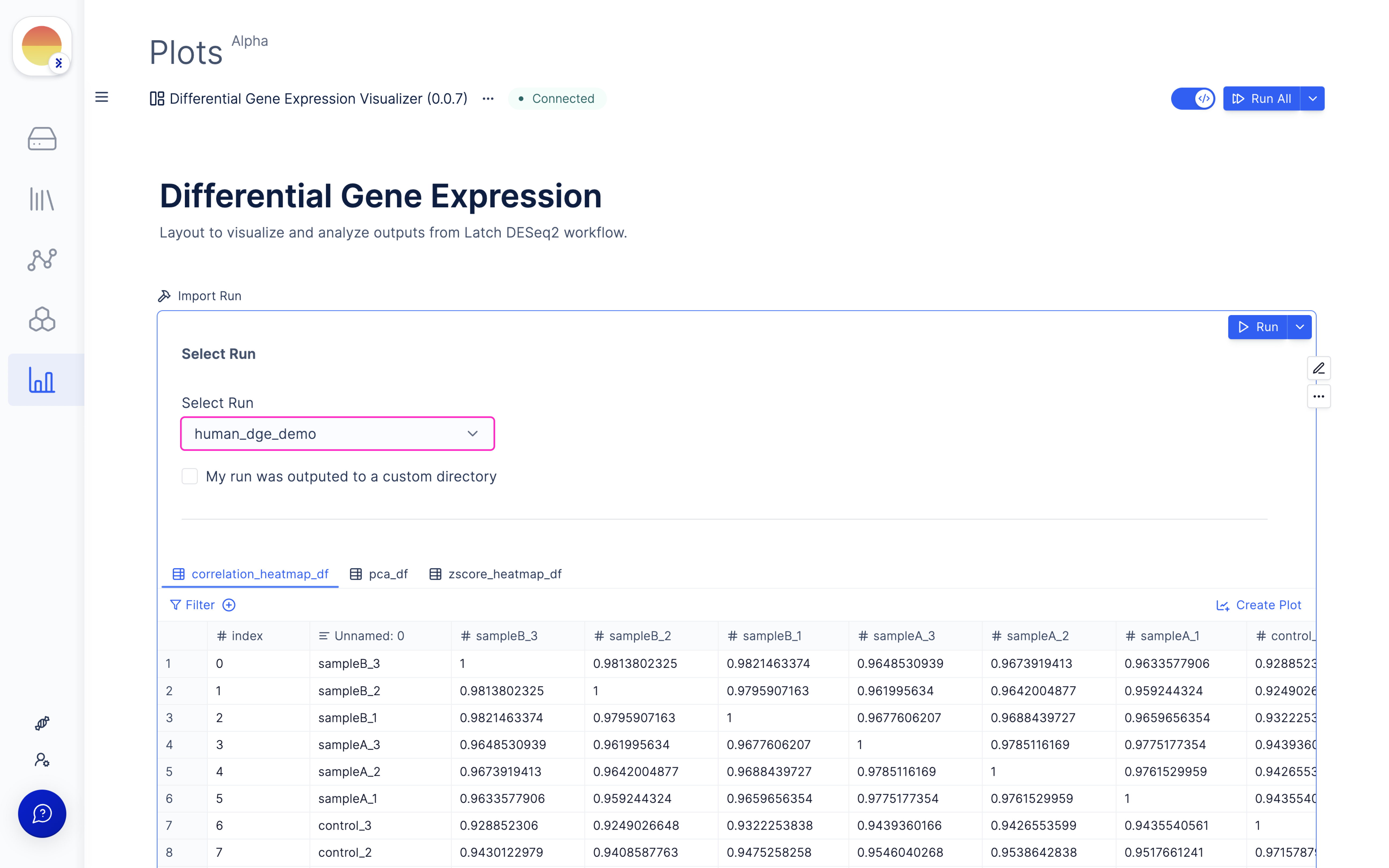
Choose ‘Contrast Conditions’ and ‘Genes of Interest’ for comparison and visualize Volcano and MA Plots.
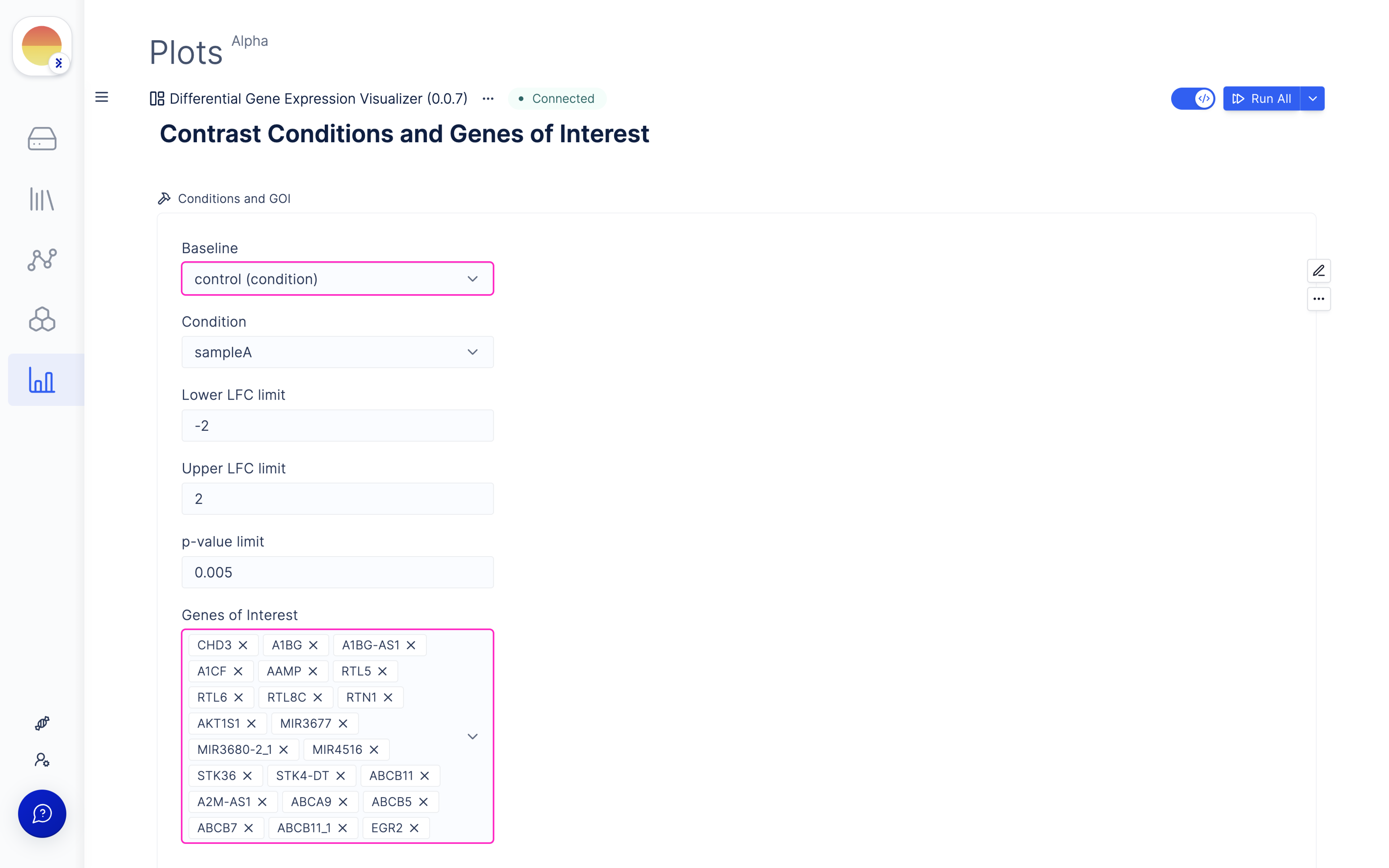
If needed, turn on ‘Dev Mode’ in the top right and add more plots or code blocks <Redirect to Plots Wiki>.
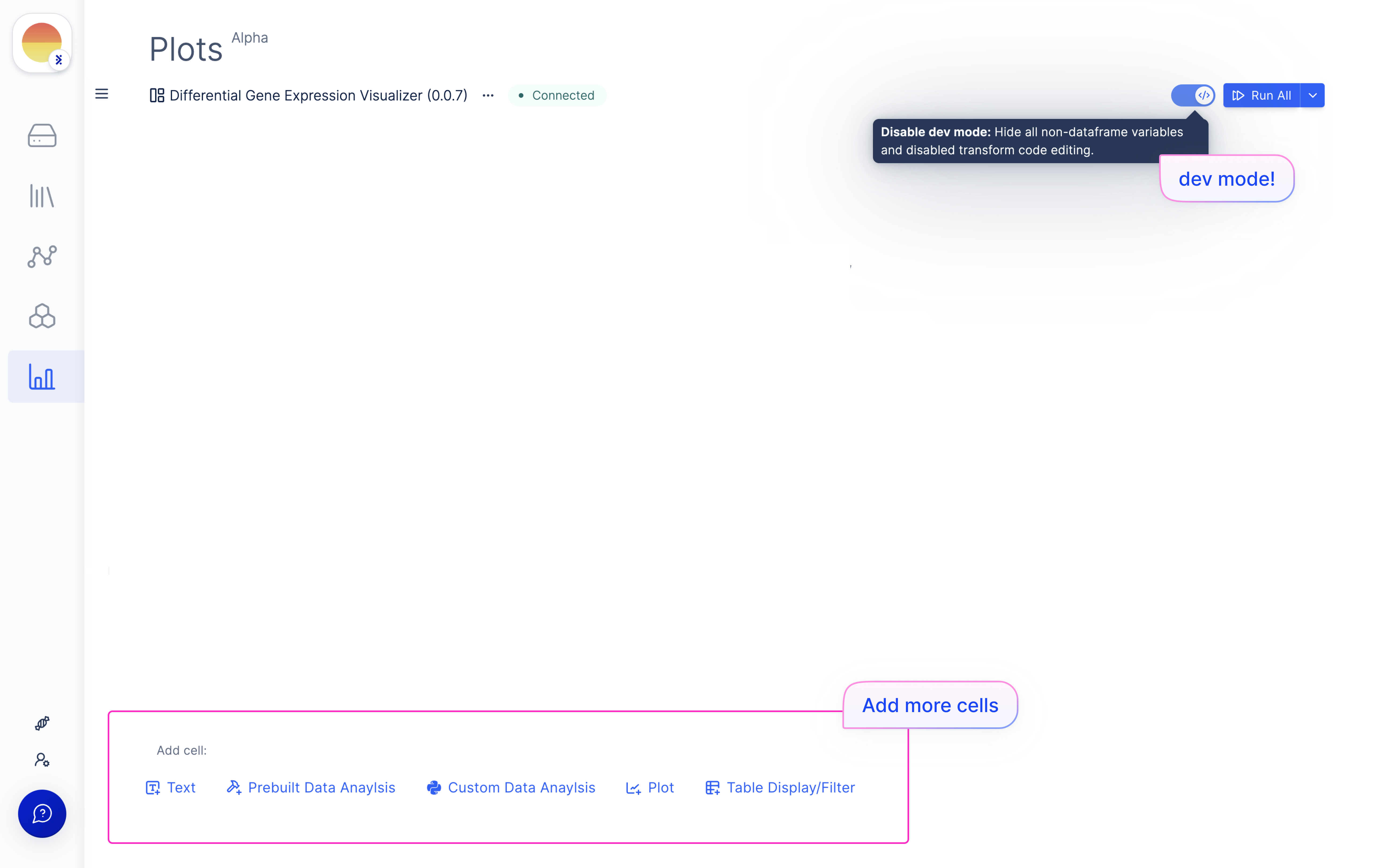
Pathway Enrichment
Launch ‘Pathway Enrichment Analysis’ Latch Workflow
Navigate to the Latch Workflows tab on the left panel.
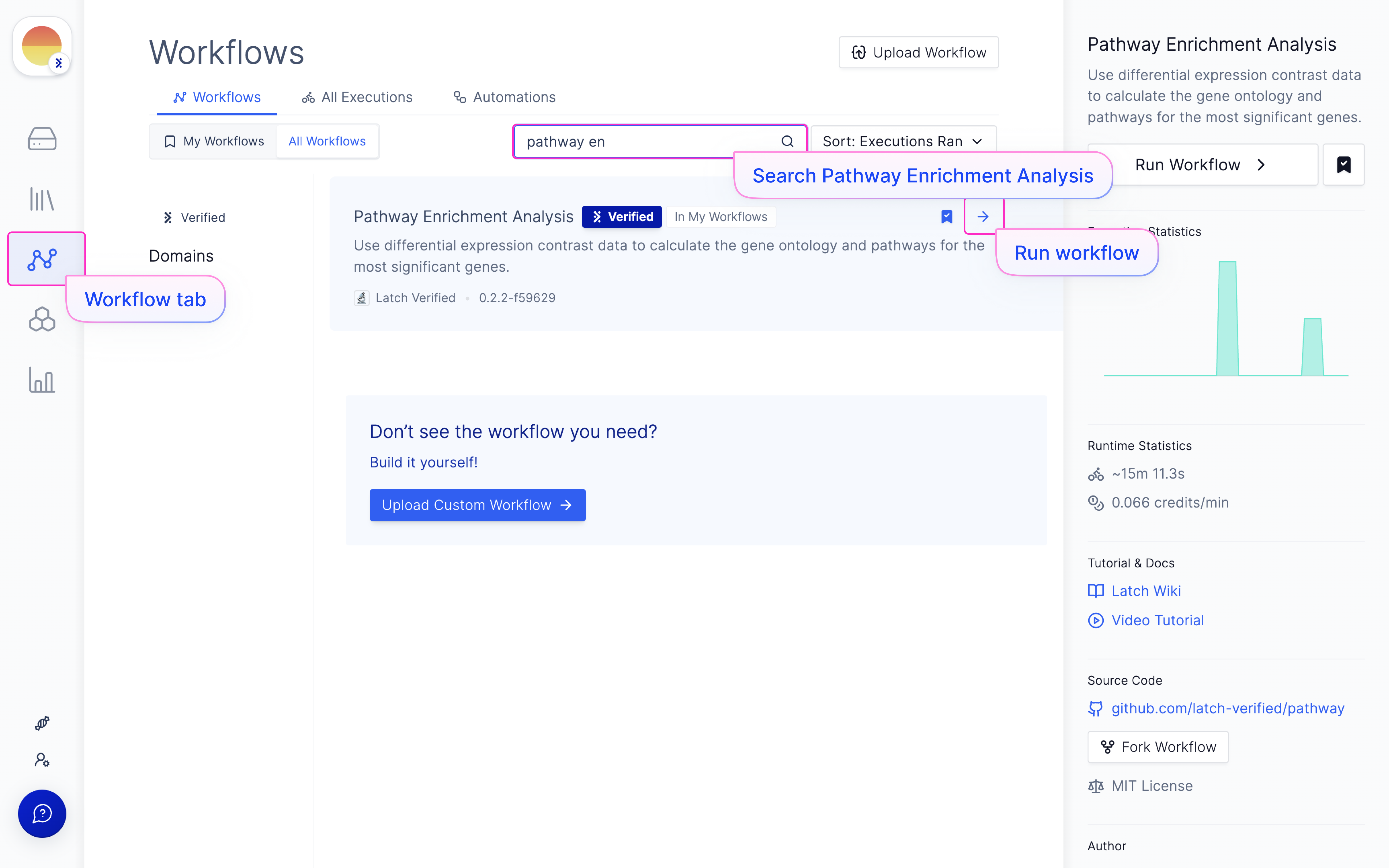
Choose your needed contrast file from the DESeq2 run output.
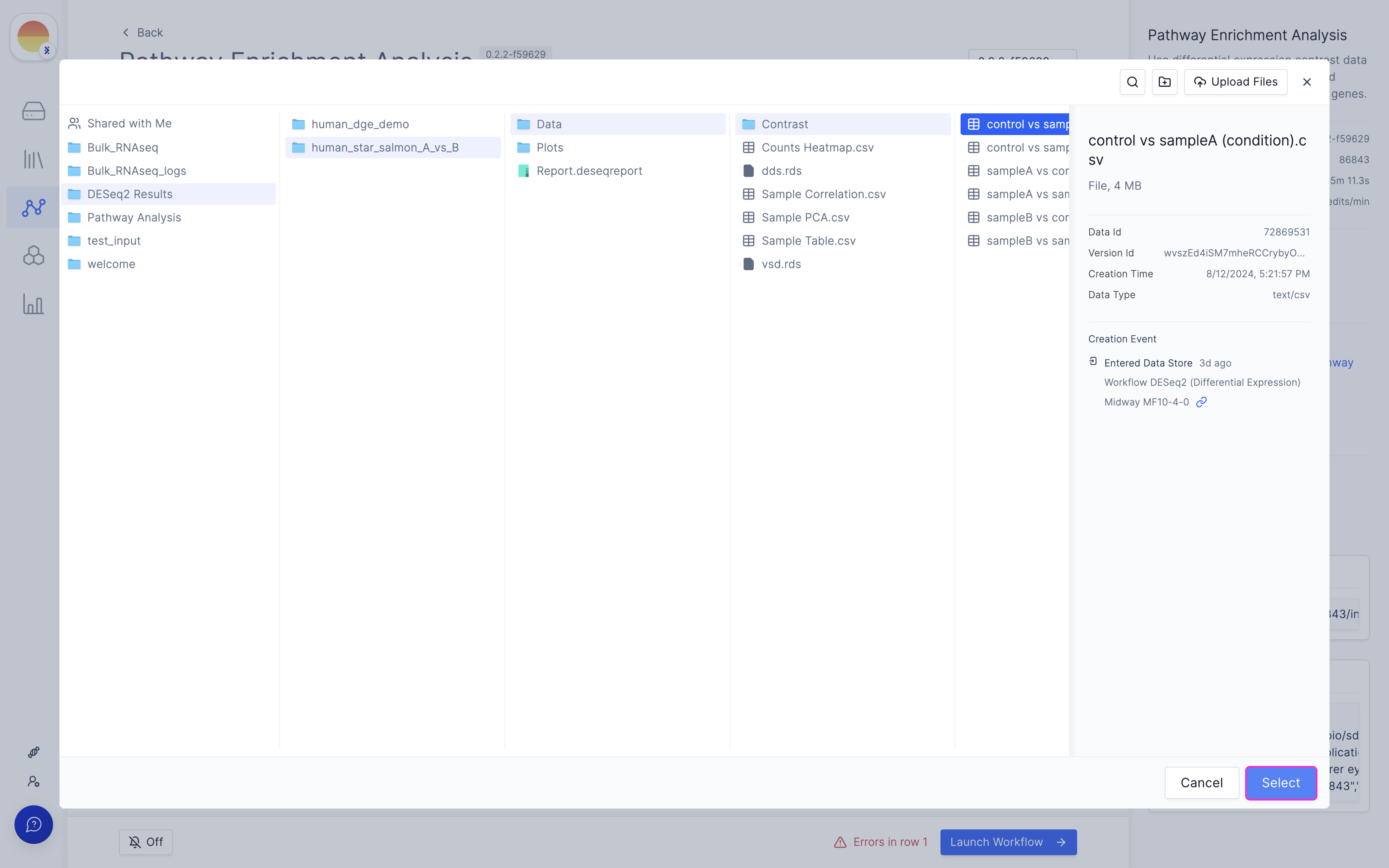
Choose your ‘Species’ and ‘Run Name’ and hit ‘Launch Workflow’.
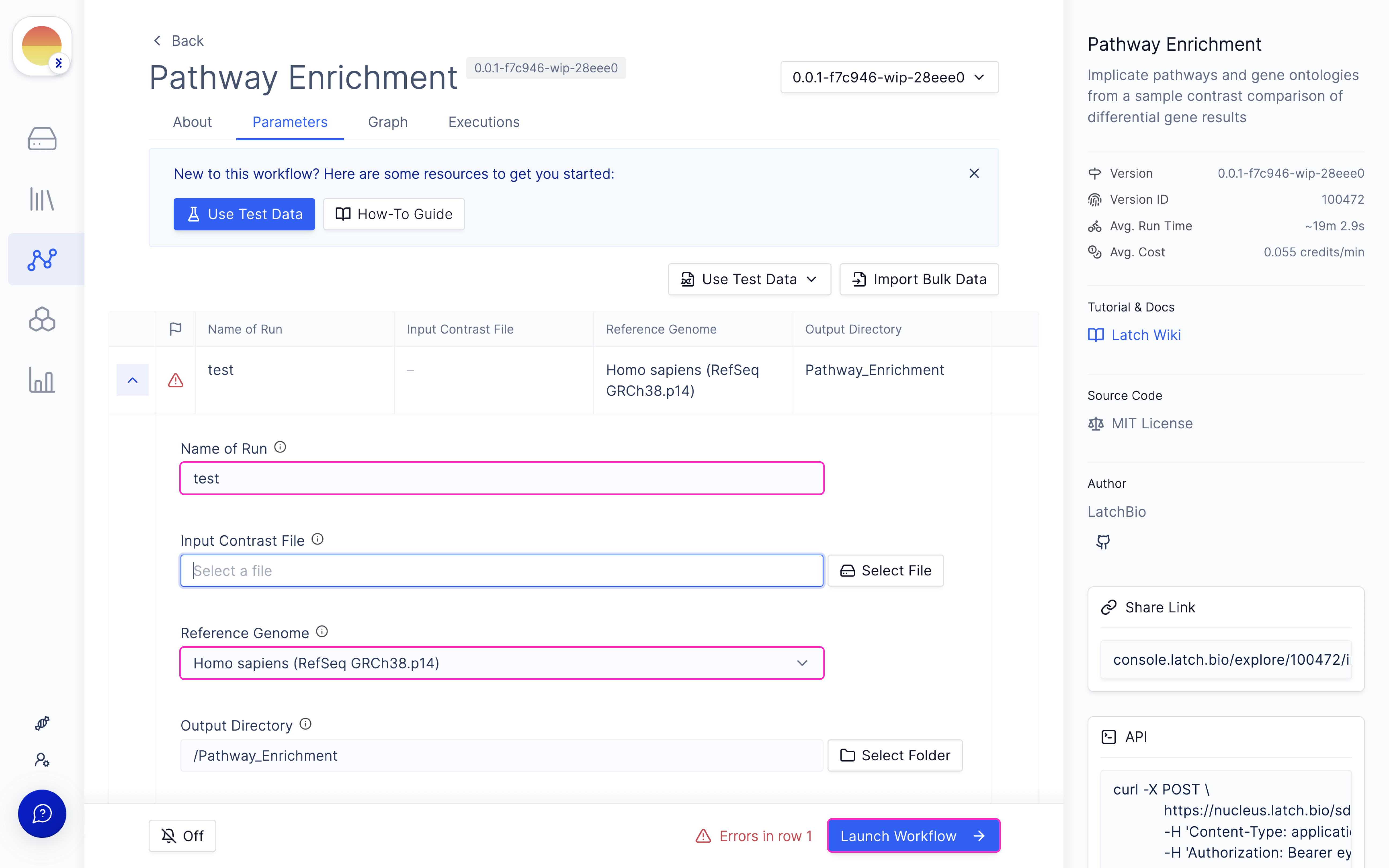
Useful outputs are the final ‘Report.html’ generated.